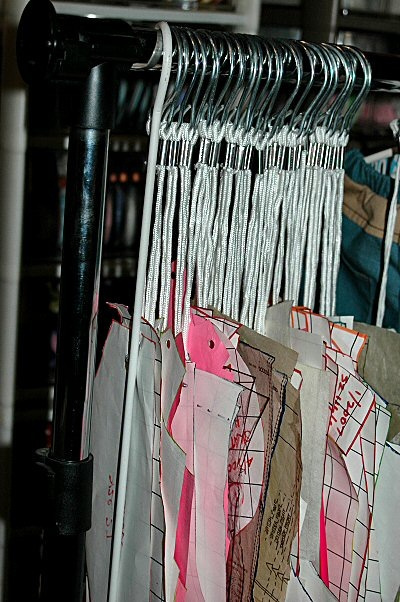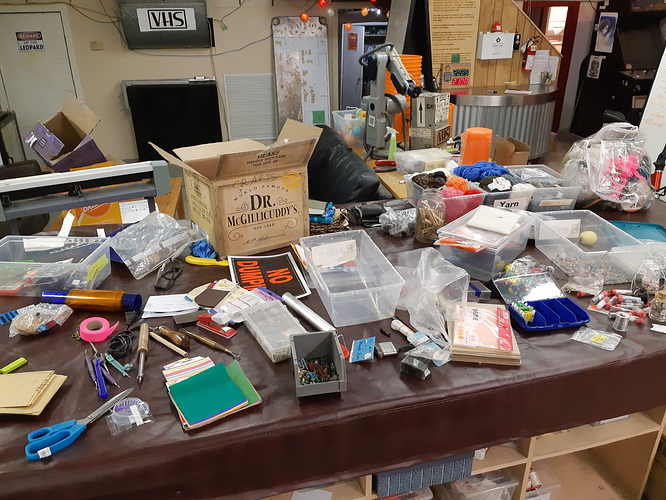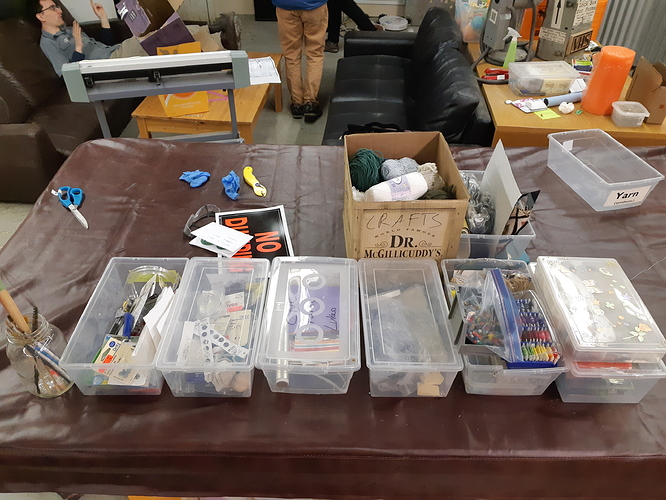Hello all,
This is my second time visiting hackspace at its new location, and it is coming along quite a bit in terms of setup. I’m hoping I can volunteer my time and skills to create a functioning sewing and pattern drafting space.
-
I spent the evening cleaning and looking at the two domestic overlock sergers and both are in good working order (though I did not have time to fully convert the Kenmore machine (the one with the purple cones) from a 3-thread rolled hem to a 4-thread safety stitch, so beware if you try to use it, the lower looper thread tension is a bit off.
-
After speaking with a few other members, the upper left locker beside the sewing table will be designated to machine parts, manuals and a mini library of reference. The locker space is NOT for sewing or crafting materials like thread / fabric / buttons, etc
-
I am hoping to over time be able to photocopy and create some manuals of reference from my school textbooks for sewing, pattern drafting and general machine usage. I don’t have a lot of disposable income for the project, so if anyone wants things done faster, or is looking for specific help, a few dollars goes a long way.
-
As well, I am hoping someone can help me create an area for large hanging pattern storage and large pattern blocks on manila tag (These cannot be folded up small like domestic sewing patterns, but they are much sturdier and can withstand many more uses than that delicate tissue paper)
-
As time goes on I am going to be drafting and donating basic working pattern blocks to the area, which members can use to trace a NEW version of the pattern onto their own paper to manipulate and add seam allowance. NEVER CUT INTO A BLOCK.
-
For right now, I only have the one pattern sitting in the locker’s upper shelf
-
Would anyone be willing or able to add a middle shelf to the inside of this locker? It would be great if the top shelf can be books and the bottom area be for machine parts
-
At later points of setup I can teach workshops like basic and advanced pattern drafting, sewing and how to make a personalized dress form out of duct tape
I also want to point out to those interested in sewing that VHS is now located very near to the Our Social Fabric non-profit, where you can get all sorts of landfill-diverted sewing supplies and fabric for very cheap. It is just down the street at 270-1275 Venables Street. I also teach sewing classes there from time to time.
Another resource that I discovered but haven’t spent a lot of time with is an open-source pattern drafting website called freesewing.org If anyone has spent time there or wants to collaborate on a learning session, let me know as I would love to help create easy access to patterns for our members. I am very familiar with sewing patterns, but not so much the coding side of things.
For my next visit, I will try to look at the other lockstitch machines to make sure they are working correctly, and then start to go through and organize the other supplies and notions.



